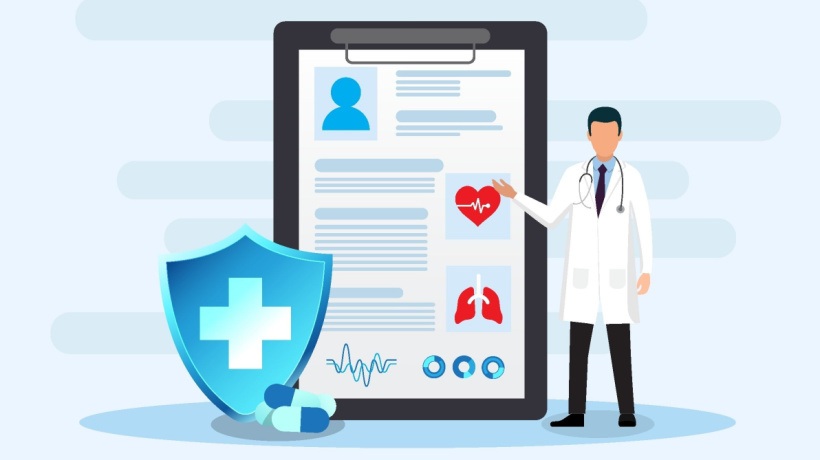The Need For Upskilling In Healthcare
Interactive eLearning platforms have emerged as revolutionary tools in the realm of continuing education for medical professionals, to use for upskilling in healthcare. These platforms leverage technology to deliver educational content in an engaging, flexible, and accessible manner. Among the cutting-edge advancements in these platforms is the integration of no-code and low-code development, allowing educators and institutions to create and customize learning modules without requiring extensive programming knowledge [1]. This democratizes the creation of educational content, enabling a wider range of professionals to contribute to and benefit from eLearning.
Why Upskilling In Healthcare Is Necessary
Rapid Advancements In Medical Science
The field of medicine is continuously evolving with rapid advancements in research, technology, and treatment methodologies. New discoveries and innovations necessitate that medical professionals keep up-to-date to provide the best possible care. Staying current with these developments is crucial for accurate diagnosis, effective treatment, and patient safety.
Changing Patient Demographics And Needs
As patient demographics shift due to factors like aging populations and the increased prevalence of chronic diseases, healthcare professionals must adapt their skills to meet new demands. Upskilling allows practitioners to better understand and manage the complex needs of diverse patient groups, improving outcomes and patient satisfaction.
Policy And Regulatory Changes
Healthcare policies and regulations are frequently updated to reflect new research findings and public health goals. Medical professionals need to stay informed about these changes to ensure compliance and maintain the highest standards of care. Continuing education through eLearning platforms provides a convenient way to stay abreast of these regulatory updates.
The Role Of Technology In Modern Healthcare
Technology plays an increasingly significant role in healthcare, from electronic health records (EHR) to telemedicine and advanced diagnostic tools. Familiarity with these technologies is essential for modern healthcare professionals. eLearning platforms, especially those utilizing no-code and low-code development, can offer interactive tutorials and simulations to help practitioners gain hands-on experience with these tools.
Interactive eLearning Platforms: An Overview
Definition And Features
Interactive eLearning platforms are digital environments that facilitate the delivery of educational content through interactive elements like videos, quizzes, simulations, and forums [2]. These platforms are designed to be user-friendly and accessible, often incorporating no-code and low-code development tools to allow educators to create and update content easily.
Evolution Of eLearning In Healthcare
The adoption of eLearning for upskilling in healthcare has grown significantly over the past decade. Initially, online education was limited to basic courses and webinars. However, advancements in technology have led to the development of sophisticated platforms that offer immersive learning experiences, real-time feedback, and personalized learning paths. No-code and low-code development have further accelerated this evolution, enabling rapid content creation and customization.
Key Benefits Over Traditional Learning Methods
eLearning platforms offer several advantages over traditional classroom-based learning [3]:
- Flexibility
Learners can access content at their convenience, fitting education around their busy schedules. - Cost-effectiveness
Reduces the need for physical materials and travel, making education more affordable. - Engagement
Interactive elements and gamification techniques increase learner engagement and motivation. - Scalability
Platforms can accommodate a large number of users simultaneously, making it easy to scale educational programs.
Types Of eLearning Platforms For Medical Professionals
Synchronous Vs. Asynchronous Learning
- Synchronous learning
Involves live sessions where participants engage in real time with instructors and peers, fostering immediate interaction and collaboration. - Asynchronous learning
Allows learners to access content at their own pace, providing flexibility and the ability to revisit materials as needed.
Webinars And Virtual Conferences
Webinars and virtual conferences are popular formats for delivering real-time, interactive educational sessions. These platforms often include features like live Q&A, polls, and breakout rooms to facilitate engagement and networking among participants.
Simulation-Based Learning
Simulation-based learning platforms use Virtual Reality (VR) and Augmented Reality (AR) to create realistic clinical scenarios. These simulations provide hands-on practice in a safe, controlled environment, enhancing clinical skills and decision-making abilities.
Mobile Learning Apps
Mobile learning apps allow healthcare professionals to access educational content on the go. These apps are designed for compatibility with smartphones and tablets, making it easy to learn anytime, anywhere.
Microlearning Platforms
Microlearning platforms deliver content in short, focused segments. This approach caters to busy professionals who need to fit learning into brief periods throughout their day. Microlearning is effective for reinforcing knowledge and skills incrementally.
Key Features Of Effective eLearning Platforms For Upskilling In Healthcare
User-Friendly Interface
An intuitive and easy-to-navigate interface is crucial for ensuring a positive User Experience. Platforms that incorporate no-code and low-code development tools enable educators to design user-friendly interfaces without needing extensive technical skills [4].
Interactive Content
Interactive content, such as quizzes, simulations, and multimedia elements, keeps learners engaged and facilitates active learning. These elements can be easily created and updated using no-code and low-code tools.
Gamification And Rewards
Gamification techniques, such as points, badges, and leaderboards, motivate learners by introducing elements of competition and reward. This approach can enhance engagement and retention.
Real-Time Feedback And Assessments
Real-time feedback and assessments allow learners to track their progress and identify areas for improvement. Immediate feedback is essential for reinforcing learning and building confidence.
Accessibility And Flexibility
eLearning platforms should be accessible across various devices and operating systems, ensuring that learners can access content whenever and wherever they need it. Flexibility in course design, facilitated by no-code and low-code tools, allows for continuous updates and customization to meet evolving educational needs.
Collaboration Tools
Collaboration tools, such as discussion forums, chat features, and group projects, promote interaction and knowledge sharing among learners. These tools foster a sense of community and support peer-to-peer learning.
Benefits Of eLearning For Medical Professionals
Convenience And Flexibility
eLearning platforms offer unmatched convenience and flexibility, allowing medical professionals to learn at their own pace and on their own schedule. This is particularly beneficial for those balancing busy work schedules with continuing education requirements.
Cost-Effectiveness
By eliminating the need for physical classrooms, travel, and printed materials, eLearning platforms reduce the overall cost of education. This makes professional development more accessible and affordable for a broader audience.
Access To The Latest Information
eLearning platforms can quickly incorporate the latest research findings, clinical guidelines, and treatment protocols, ensuring that learners have access to up-to-date information. This rapid dissemination of knowledge is crucial in a field as dynamic as healthcare.
Improved Retention And Engagement
Interactive and multimedia elements enhance learner engagement and retention. Studies have shown that active learning methods, such as simulations and quizzes, are more effective than passive learning techniques.
Enhanced Clinical Skills Through Simulations
Simulation-based learning provides practical experience in a risk-free environment, allowing medical professionals to refine their clinical skills and improve their decision-making abilities. These simulations can mimic real-life scenarios, providing valuable hands-on practice.
Opportunities For Peer Interaction And Networking
eLearning platforms facilitate networking and collaboration among medical professionals from different regions and specialties. This interaction promotes knowledge sharing, professional support, and the development of a robust professional network.
Challenges In eLearning For Upskilling In Healthcare
Technological Barriers
Despite the advantages of eLearning, technological barriers can hinder its effectiveness. Issues such as lack of access to reliable internet, outdated hardware, and insufficient technical support can pose significant challenges.
Engagement And Motivation Issues
Maintaining learner engagement and motivation can be difficult, especially in an online environment. Without the physical presence of instructors and peers, some learners may struggle to stay focused and committed.
Ensuring Content Relevance And Accuracy
Ensuring that the content remains relevant, accurate, and up-to-date is a constant challenge. Inaccurate or outdated information can lead to poor clinical practice and negative patient outcomes.
Evaluating Learning Outcomes
Assessing the effectiveness of eLearning programs and measuring learning outcomes can be challenging. Reliable metrics and evaluation methods are necessary to determine the impact of educational interventions.
Integration With Existing Systems
Integrating eLearning platforms with existing systems, such as electronic health records (EHR) and hospital management systems, can be complex. Seamless integration is essential for efficient data management and workflow optimization.
Overcoming Challenges In eLearning For Upskilling In Healthcare
Ensuring Reliable Technology And Infrastructure
Investing in reliable technology and robust infrastructure is crucial for the success of eLearning initiatives. Providing technical support and resources can help mitigate technological barriers and enhance the learning experience.
Designing Engaging And Relevant Content
Creating engaging and relevant content is key to maintaining learner interest and motivation. Incorporating multimedia elements, interactive features, and real-world scenarios can make learning more appealing and effective.
Providing Adequate Support And Resources
Offering adequate support and resources, such as technical assistance, academic advising, and access to supplementary materials, can help learners overcome challenges and succeed in their educational endeavors.
Continuous Monitoring And Feedback
Regular monitoring and feedback are essential for assessing the effectiveness of eLearning programs and identifying areas for improvement. Collecting and analyzing learner feedback can provide valuable insights into the learning experience.
Case Studies: Success Stories Of Upskilling In Healthcare With eLearning
Hospital-Wide Implementation Success
Several hospitals have successfully implemented eLearning platforms to enhance staff training and professional development. For example, a large urban hospital integrated an eLearning platform to provide ongoing education on the latest clinical practices and technologies. The result was improved staff competence, higher patient satisfaction, and reduced medical errors.
Individual Professional Development
Individual medical professionals have also benefited from eLearning. For instance, a rural physician used an eLearning platform to complete a specialty certification program. The flexibility of online learning allowed the physician to balance work commitments while advancing their career.
Specialty-Specific Training Programs
Specialty-specific training programs delivered via eLearning platforms have proven effective in addressing unique educational needs. An example is an eLearning course designed for oncology nurses, which provided comprehensive training on the latest cancer treatments and patient care protocols.
International Training And Collaboration
eLearning platforms have facilitated international training and collaboration among healthcare professionals. A global health organization used an eLearning platform to deliver training on infectious disease management to healthcare workers in developing countries. This initiative improved disease control efforts and fostered international collaboration.
Future Trends In eLearning For Medical Professionals
AI And Machine Learning In eLearning
Artificial Intelligence (AI) and Machine Learning are set to revolutionize eLearning by providing personalized learning experiences. AI can analyze learner data to tailor content and assessments to individual needs, enhancing the effectiveness of education.
Virtual And Augmented Reality Applications
Virtual Reality and Augmented Reality applications are becoming increasingly popular in eLearning. These technologies provide immersive learning experiences, allowing medical professionals to practice procedures and interact with virtual patients.
Personalized Learning Experiences
Personalized learning experiences are gaining traction, with eLearning platforms offering customized learning paths based on individual learner profiles. This approach ensures that learners receive relevant content that meets their specific needs and goals.
Increased Focus On Soft Skills Training
Soft skills, such as communication, empathy, and teamwork, are critical in healthcare. eLearning platforms are incorporating modules on soft skills training to help medical professionals enhance their interpersonal and professional skills.
Global Collaboration And Resource Sharing
Global collaboration and resource sharing are expected to increase, with eLearning platforms facilitating the exchange of knowledge and best practices among healthcare professionals worldwide. This trend promotes a global standard of healthcare education and practice.
Conclusion
Upskilling is essential for medical professionals to stay current with advancements in medical science, address changing patient needs, comply with policy and regulatory changes, and leverage modern technology. Continuous education ensures that healthcare practitioners can provide the highest quality of care.
References:
[1] Demystifying Low-Code Development And Understanding Future Scope
[2] Digital Experience: Accomplish Value with No-Code
[3] Top 15 Benefits of No-Code App Development
[4] Why You Need No-Code Skills to Succeed in the Digital World









